Willow Canyon | Death Valley National Park, California
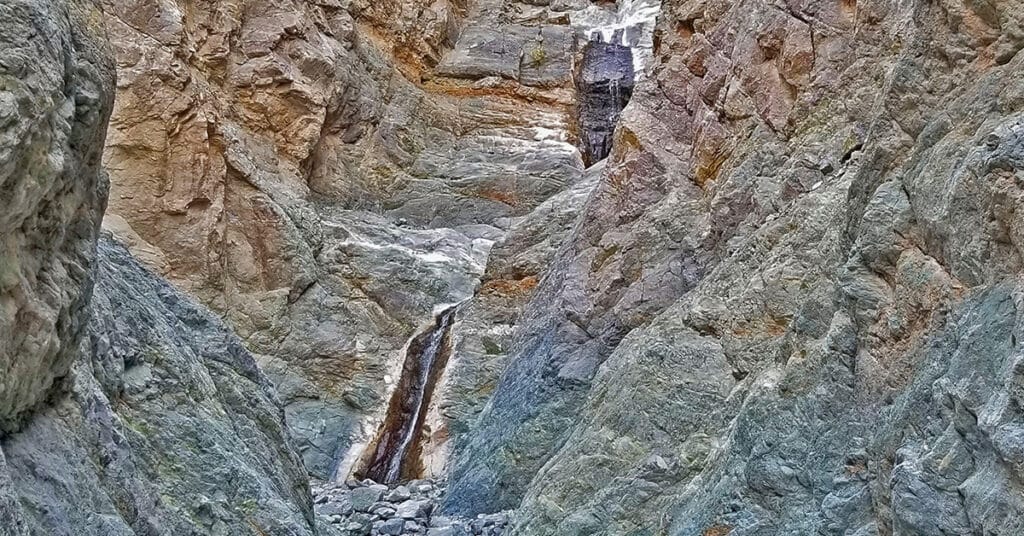
Willow Canyon along with Darwin Falls are both rare year-round waterfalls in Death Valley, one of the hottest, driest places on earth! Often missed, Willow Canyon shares the same trailhead with the more popular Sidewinder Canyon. The most beautiful part of Willow Canyon is the last 1/4th mile of this 2-mile adventure before the falls where the canyon narrows, the water begins to flow and cascade over rocks and the surrounding cliffs reveal amazing sculptures. Route details: Approx. 4 Miles Out and Back; 500ft Elevation Gain **Canyon Wash Route** Click image or title above for more…
Wildrose Peak | Death Valley, California
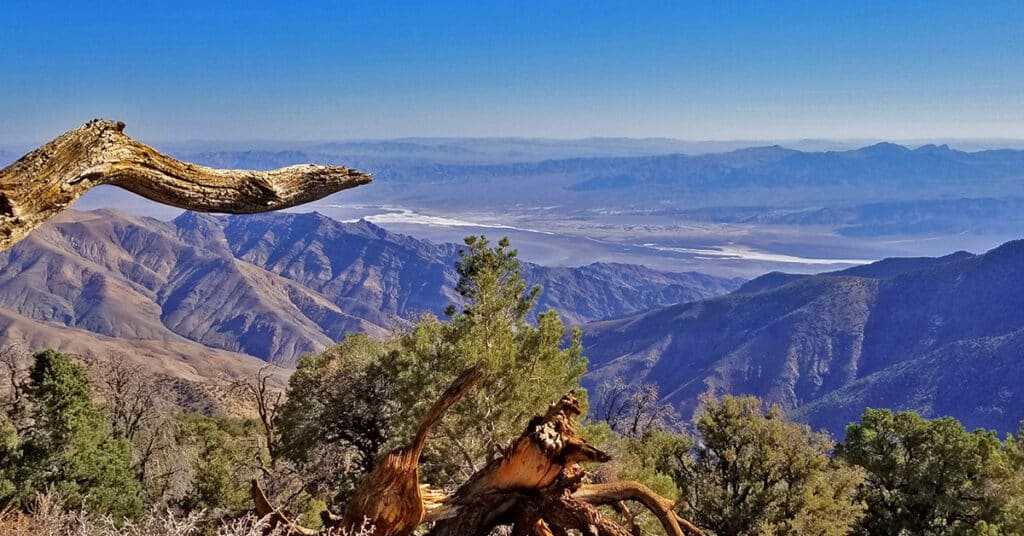
Wildrose Peak is an 8.4 mile round trip trail beginning at the Wildrose Charcoal Kilns in Death Valley National Park, California. Ascending the excellent trail from the Wildrose Charcoal Kilns at 6,800ft elevation to the summit of Wildrose Peak at 9,064ft elevation, your total elevation gain is 2,264ft. Views at points along the trail and definitely from the summit are spectacular including the expanse of Death Valley almost directly below from Badwater to Furnace Creek and further in both directions with the Funeral Mountains as a backdrop. It’s a Grand Canyon level view! 8.4 Miles RT, 6,800 > 9,064ft **Excellent Trail** Click image or title above for more…
Wildrose Charcoal Kilns | Death Valley, California
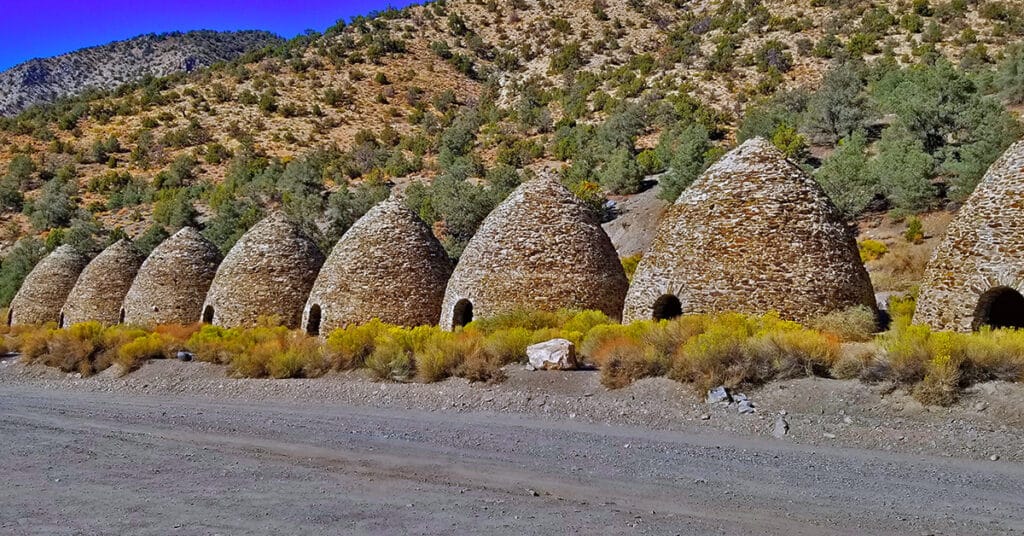
The Death Valley Wildrose Charcoal Kilns, located on Charcoal Kiln Road near Telescope Peak in the Panamint Mountain Range are perhaps the best preserved Charcoal Kilns on earth. Built in 1877 to create charcoal used to smelt lead and silver in the Modock Mines about 25 miles West in the Argus Range, the Wildrose Charcoal Kilns were only used for 2 years. Click image or title above for more…
Twenty Mule Team Canyon | Death Valley National Park, California
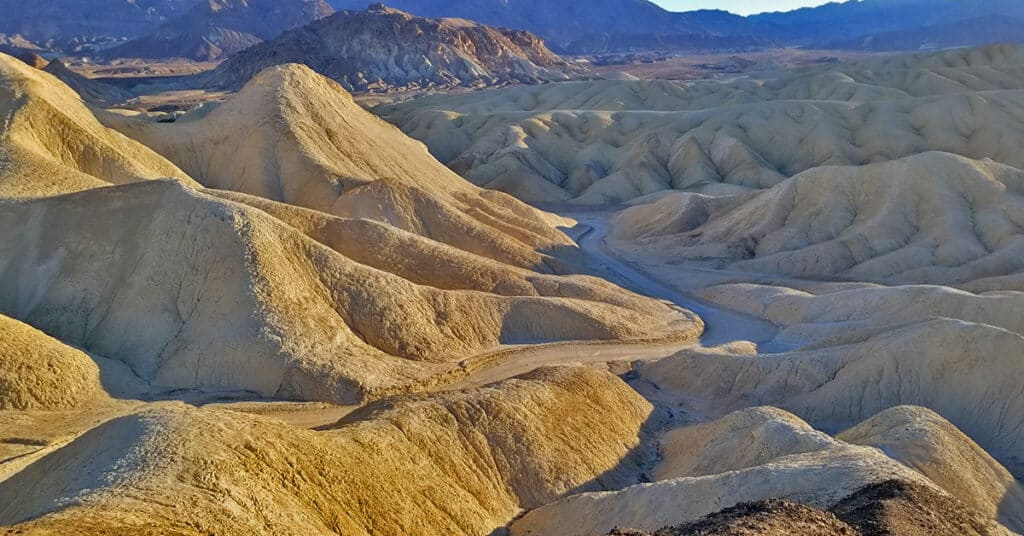
Twenty Mule Team Canyon is the original late 19th century bad lands route for the famous Twenty Mule Team wagons that hauled borax ore from the Harmony Borax Works in Furnace Creek out of Death Valley, 165 miles away to Mojave, California. Today you can drive through Twenty Mule Team Canyon on a good unpaved road to see the same surroundings the original Twenty Mule Team Canyon wagon drivers viewed. You will also see signs of historic borax prospecting in the canyon. Approx. 4 Miles Loop; 500ft Elevation Gain **Unpaved and Paved Roads** Click image or title above for more…
Titus Canyon Grand Loop by Mountain Bike | Death Valley National Park, California
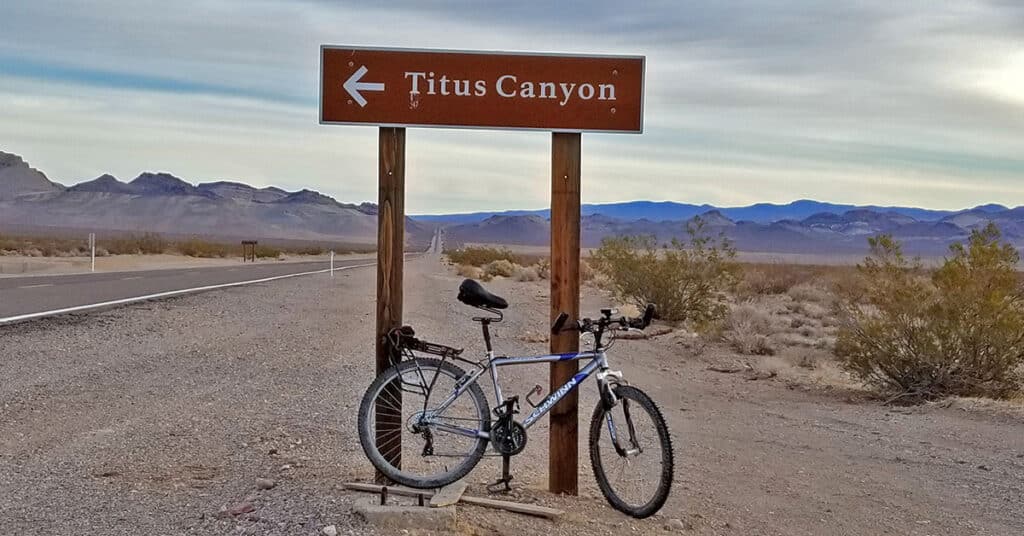
The Titus Canyon Grand Loop by Mountain Bike is a huge 65.6-mile loop beginning and ending in Death Valley, California at a rest area just North of the intersection of Highway 394 (Daylight Pass Road) and Scotty’s Castle Road. There is no 2-car assist here. No car parked on each end of Titus Canyon. No one-way trip down Titus Canyon. Instead, the entire loop both up and down is made by mountain bike. Route details: Approx. 66 Miles; 7,000ft Elevation Gain; **1/2 Asphalt Rd, 1/2 Unpaved Rd** Click image or title above for more…
Telescope Peak Summit from Charcoal Kilns | Death Valley, California
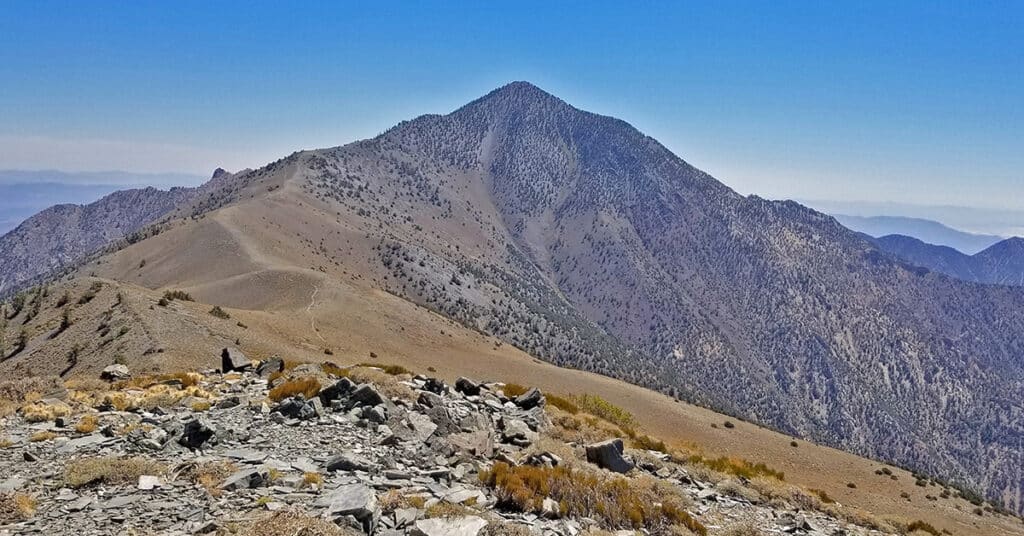
Telescope Peak, on the highest ridge of the Panamint Mountain Range bordering the West side of Death Valley is as close as you can get to experiencing the entire valley in one adventure. The feeling is purely magical as you traverse a ridge on top of the world, looking straight from that 11,049ft elevation down to Badwater, lowest point in the Western hemisphere at -282ft. Route details: 19 mi Roads, Trails (mostly), Wilderness
6800ft > 11,043ft **Mostly Excellent Trails** Click image or title above for more…
Tea House and Table Rock | Furnace Creek Ranch | Death Valley National Park, California
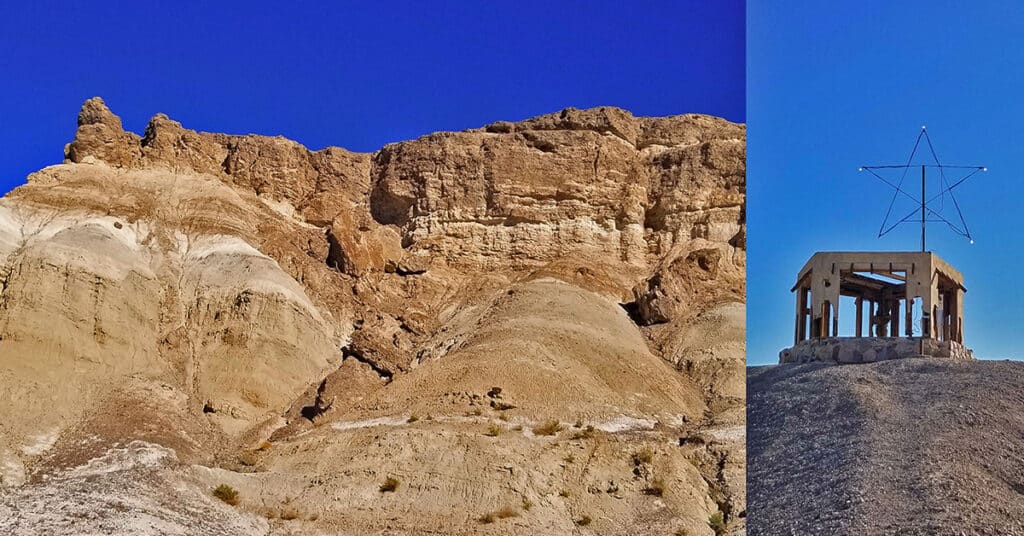
Tea House and Table Rock in Death Valley is a hike that delivers a huge reward in a short time. You will experience expansive 360 degree views of Death Valley. First of all, there are spectacular views up and down the length of Death Valley from the North to the South. Across to the West one can see the entire length of the Panamint Mountain Range. There is even a small cemetery with early explorer grave sites on one of the hills along the route. Route details: Approx. 2-4 Miles Circuit; -190 > about 300ft **No Trails, Navigate Desert** Click image or title above for more…
Skidoo Ghost Town | Death Valley National Park, California
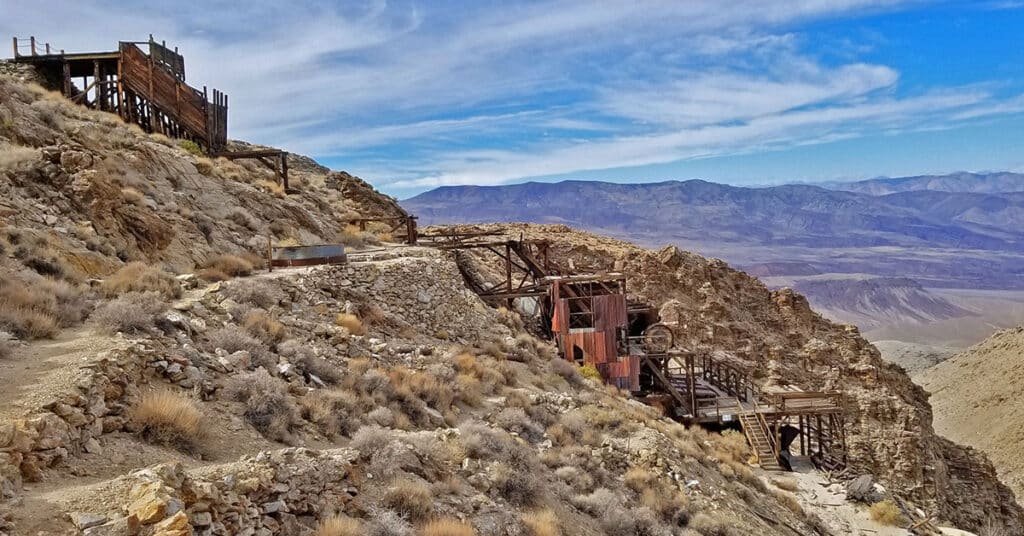
Skidoo Ghost Town & Mill, located near Emigrant Canyon in the Panamint mountain range above Death Valley, California, is an old California gold rush ghost town approachable by 4WD vehicles on a 9-mile unpaved road. The hills around Skidoo Ghost Town & Mill have around 1,000 abandoned mines along with the remains of iron machinery, wooden cabins, old rusting cars and other odds and ends from the mining era. The largest, most impressive remaining structure is the Skidoo Stamp Mill used to extract gold from raw ore. Route details: 18 Miles RT; 5000 > 5700ft **Fair Unpaved Road** Click image or title above for more…
Sidewinder Canyon | Death Valley National Park, California
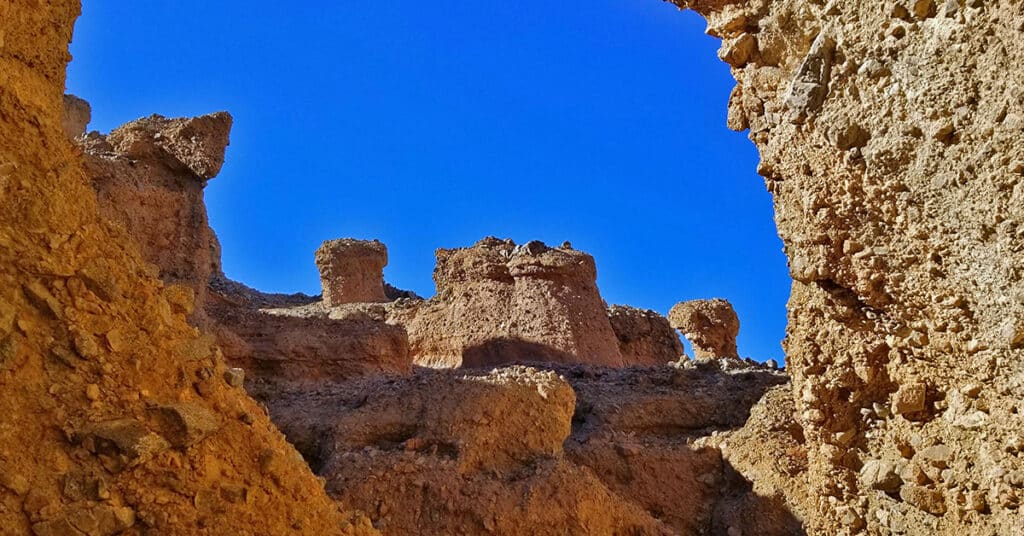
Sidewinder Canyon in the Southern area of Death Valley National Park, California offers a series of intricate slot canyons with a variety of experiences from weaving around many frequent twists and turns to moderate rock climbing over vertical ledges, some 8-10ft high to scrambling up rocky inclines to even crawling through tight openings. Long stretches of the slot canyons are just wide enough to fit the width of your body without turning sideways, and the vertical walls on either side are around 40-75ft tall on average. In places, it’s almost like being in a cave! Route details: 8-10 Miles Based on Side Canyon Choices; **Elevation Gain Approx. 800ft | Canyon Wash Trails** Click image or title above for more…
Rhyolite Ghost Town | Death Valley, Nevada
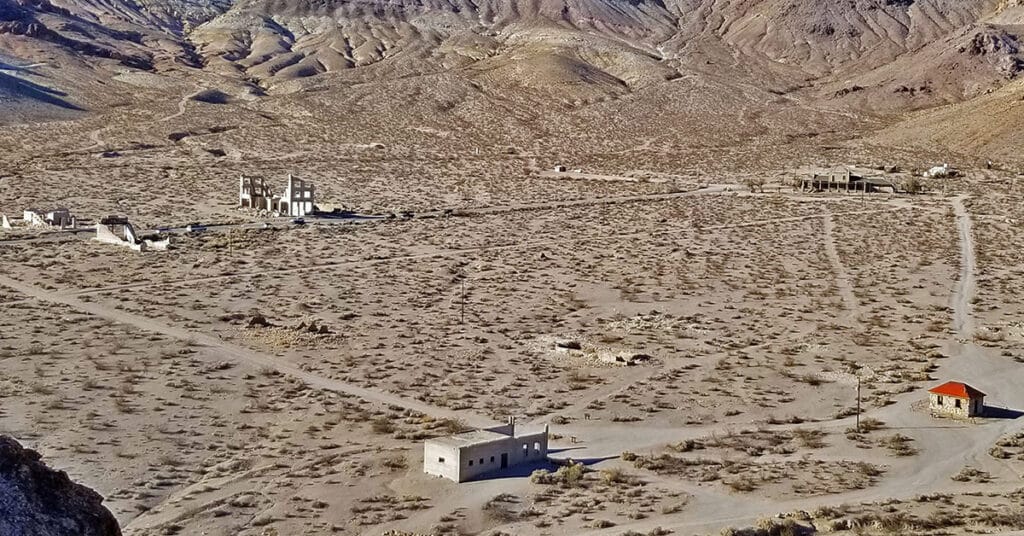
Of all the early 1900’s gold rush ghost towns in the greater Death Valley area, Rhyolite was the most elaborate with the largest population. Rhyolite grew from a 2-tent mining camp in 1904 to a town with a population of 10,000 including the amenities of much larger U.S. cities of the day by 1907. Then, by 1910 with the decline of gold production in its Montgomery Shoshone Mine, Rhyolite was down to a population of 675. By 1920, only 13 years after its heyday, Rhyolite had only 14 residents. Route details: Wander around the town + high view from surrounding hills and mines. Click image or title above for more…
